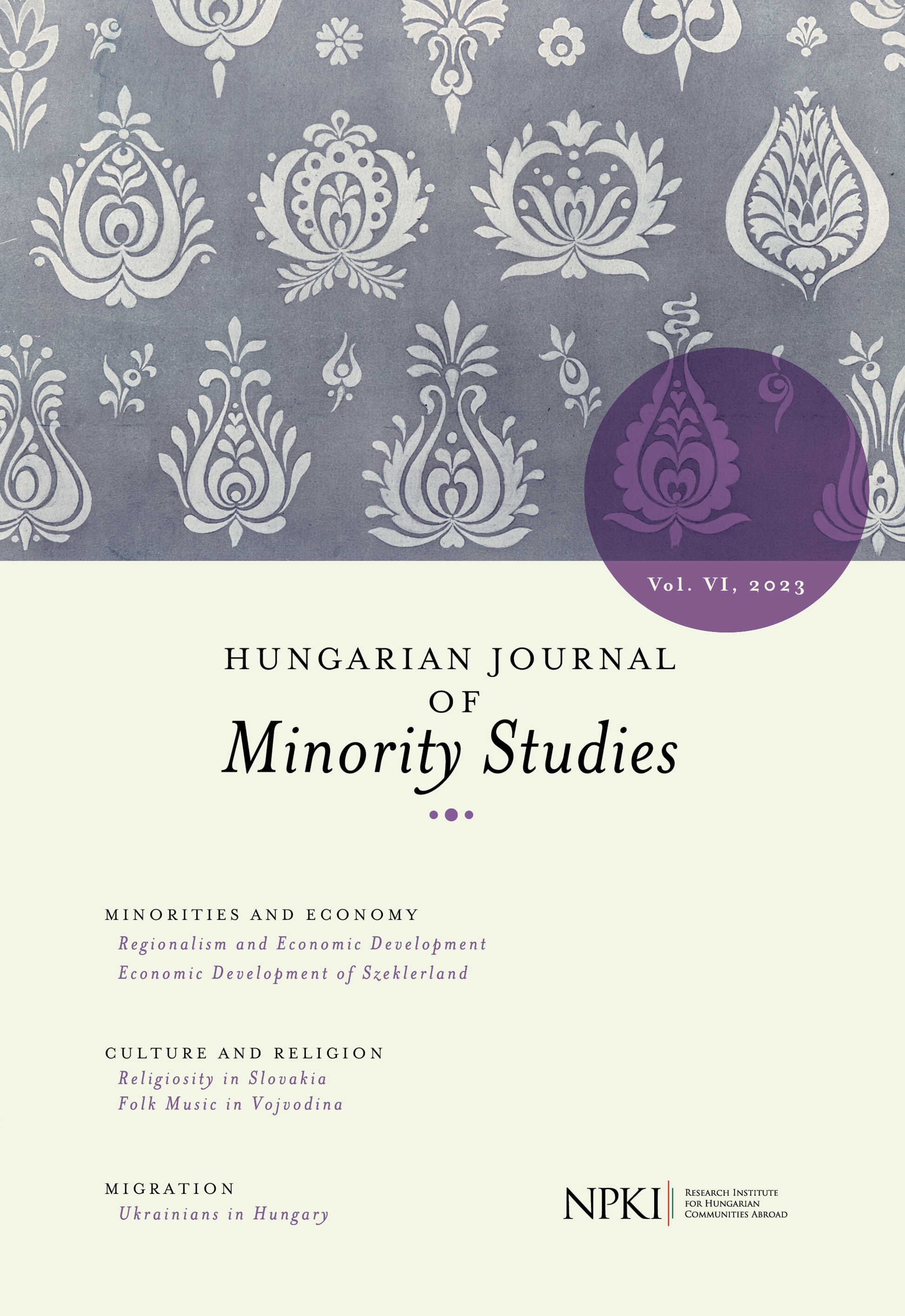Yugoslav Kitsch Wave with a Hungarian Accent: Newly Composed Folk Music in Vojvodina
Yugoslav Kitsch Wave with a Hungarian Accent: Newly Composed Folk Music in Vojvodina
Author(s): Benedek PálSubject(s): Customs / Folklore, Music, Ethnic Minorities Studies
Published by: Nemzetpolitikai Kutatóintézet
Keywords: folk music; Vojvodina; Hungarian
Summary/Abstract: This paper discusses the history of 3+2, a popular pop-folk band from Vojvodina, as a Cold War cultural transfer between Hungary and Yugoslavia. It aims to contextualize their style and emergence in the broader context of the Yugoslavian “newly composed folk music” (novokomponovana narodna muzika). The case study focuses on the band’s breakthrough in the second half of 1980s and the moral panic they triggered in the Hungarian media, reminiscent of the controversies that took place in Yugoslavia about the newly composed folk music in the 1960s–1970s. However, in the case of late state socialist Hungary, concern was more about the quality of the so-called “wedding rock” (lakodalmas rock or mulató zene) than about nationalist tendencies, as it was in the Yugoslav context. The majority of the Kádárist media establishment condemned the phenomenon as a kitsch, cheap form of entertainment, while in the society it was a massive success. This highlights the differences between the Hungarian centralized system of music production and the liberal commercial approach existing in Yugoslavia. The popular music produced by 3+2 and others from the Vojvodina scene filled a market niche in Hungary, which had been neglected by the music establishment. Their style and songs, which were often covers of popular interwar songs, resonated well with the taste of average Hungarians. This is proved also by the fact that around the Hungarian transition in 1989, when the social-economic context became liberalized, homegrown acts of this genre reached a similar success and pushed out the Vojvodina bands from the Hungarian market.
Journal: Hungarian Journal of Minority Studies
- Issue Year: 6/2023
- Issue No: 1
- Page Range: 85-95
- Page Count: 11
- Language: English

